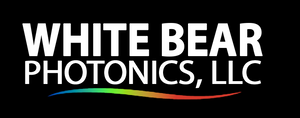Choosing the Right Cuvettes for UV-VIS Experiments
In UV-VIS spectroscopy, signal quality hinges on a deceptively simple component: the cuvette. Selecting the right cell, and pairing it with compatible holders, lamps, and peripherals, can make the difference between clean, publication-ready spectra and noisy data you would rather forget. This guide walks you through the critical parameters—optical path length, material, and coating—then ties everything together with practical handling tips and a spotlight on the latest UV-VIS accessories from White Bear Photonics (WBP).
1. Why Cuvette Choice Matters
Beer–Lambert’s law (A = εbc) reminds us that absorbance (A) is directly proportional to path length (b) and concentration (c). A cuvette isn’t just a sample holder—it defines optical geometry, limits stray light, and interacts chemically with your sample. Overlooking cuvette specifications can:
- Raise measurement uncertainty and limit of detection
- Introduce baseline artifacts through scattering or fluorescence
- Compromise reproducibility when coatings degrade or surfaces scratch
Keeping these pitfalls in mind, let’s dissect the three pillars of a cuvette specification.
2. Optical Path Length: Sensitivity Meets Dynamic Range
The most visible specification on any cuvette datasheet is its path length (commonly 1 mm, 2 mm, 5 mm, 10 mm, 20 mm, or 50 mm). Here’s how that single number controls experimental sensitivity.
2.1 Path Length vs. Sensitivity
| Path Length | Typical Sensitivity Gain* | Ideal Applications |
|---|---|---|
| 1–2 mm | Baseline | High-concentration analytes, turbid samples |
| 5 mm | ≈5× vs 1 mm | Medium-concentration dyes, enzyme assays |
| 10 mm (standard) | ≈10× vs 1 mm | Most quantitative UV-VIS analyses |
| 20–50 mm | 20–50× vs 1 mm | Trace analytes, environmental monitoring |
*Approximate theoretical gain; practical S/N depends on lamp stability, detector noise, and optical alignment.
When sensitivity is paramount—say, measuring ppb-level contaminants in water—choosing a 50 mm cylindrical cuvette can expand your dynamic range without resorting to aggressive signal averaging. Conversely, if you’re running kinetics on protein solutions near 1 mg/mL, a 1 mm microvolume cell avoids saturating the detector.
2.2 Matching Path Length to Beam Height
Standard UV-VIS spectrometers emit beams at 8.5 mm, 12.5 mm, or 15 mm above the cuvette base. Verify that your cell’s window alignment matches the instrument. WBP conveniently lists beam height on every cuvette product page, simplifying the match-up process.
3. Material Matters: Quartz vs. Optical Glass
Material choice sets the usable wavelength range, chemical compatibility, and baseline noise level.
3.1 Quartz
- Transparency: 190–3,500 nm (covers deep UV)
- Chemical resistance: Excellent against acids, bases, most solvents
- Cost: Higher due to furnace-based fabrication
Quartz is the material of choice for DNA/protein quantification at 260/280 nm, process monitoring under harsh pH, and dual-lifetime referencing where stray fluorescence must be minimal.
3.2 UV-Grade Optical Glass
- Transparency: 320–2,500 nm
- Chemical resistance: Good, but avoid HF and strong alkali
- Cost: ≈50–70 % less than quartz
For routine colorimetric assays or quality-control measurements above 320 nm, optical glass provides budget relief without sacrificing performance. However, it cannot handle deep-UV transitions or prolonged exposure to corrosive reagents.
Pro tip: If you operate a multi-user core facility, keep both materials on hand. High-value quartz cells stay protected for critical low-wavelength work; glass cells handle day-to-day teaching labs.
4. Handling & Cleaning Tips: Protecting Your Investment
Even the best cuvette fails if mishandled. Build these habits into your SOP:
- Rinse Immediately. After measurement, flush with the solvent used in your sample. Dried residues etch surfaces.
- Use Lint-Free Swabs. Cotton fibers scratch AR coatings; opt for microfiber or foam-tip swabs.
- Avoid Ultrasonic Baths for Coated Cells. Micro-vibrations can delaminate AR films. Hand-swirl instead.
- Store Vertically and Dry. Residual moisture breeds microbial growth, especially in glass cells.
- Glove Up. Fingerprint oils raise baseline absorbance at 270–300 nm. Nitrile gloves are a sound compromise between dexterity and cleanliness.
5. White Bear Photonics UV-VIS Solutions
White Bear Photonics’ portfolio is engineered for compatibility and modular growth. Here’s how the lineup solves real-world lab challenges.
5.1 UV-VIS Cuvettes
- Standard Quartz Series – 10 mm path length, spectral range 190–3,500 nm
- Microvolume “Drop-In” Cells – 1–2 µL sample volume for protein quantitation.
- High-Sensitivity Long-Path Cylindrical Cells – 50 mm path length with TEFLON jacket, screw-cap sealing for volatile solvents.
View our wide selection of cuvettes here.
5.2 Universal Cuvette Holders
Cuvette Holders for our fiber coupled systems
6. Putting It All Together: A Decision Workflow
Use the flowchart below (also downloadable as a poster) to narrow down your selection:
- Define wavelength range → deep UV (< 320 nm)? Choose quartz.
- Estimate expected absorbance → A > 2 at 10 mm? Shorten path.
- Check sample volume → < 50 µL? Microvolume or flow cell.
- Assess chemical harshness → HF or strong alkali? TEFLON-jacketed quartz.
- Consider environmental controls → Temperature-sensitive kinetics? Pair with Peltier holder.
- Select compatible lamp based on wavelength range and stability requirements.
8. Key Takeaways
- Path length dictates sensitivity—choose shorter cells for concentrated samples and longer cells for trace analysis.
- Material sets the wavelength ceiling: optical glass (≥320 nm) vs. quartz (≥190 nm).
- Proper handling and cleaning protect both data integrity and your investment.
- White Bear Photonics delivers a complete, modular UV-VIS workflow—from cuvettes and holders to calibrated lamps.
9. Ready to Upgrade?
Visit the UV-VIS Cuvette Collection to compare specifications side-by-side, or explore the accessories catalog for holders, flow cells, and replacement lamps. Your next breakthrough deserves optical hardware engineered for accuracy.
Measure with confidence. Measure with White Bear Photonics.






















